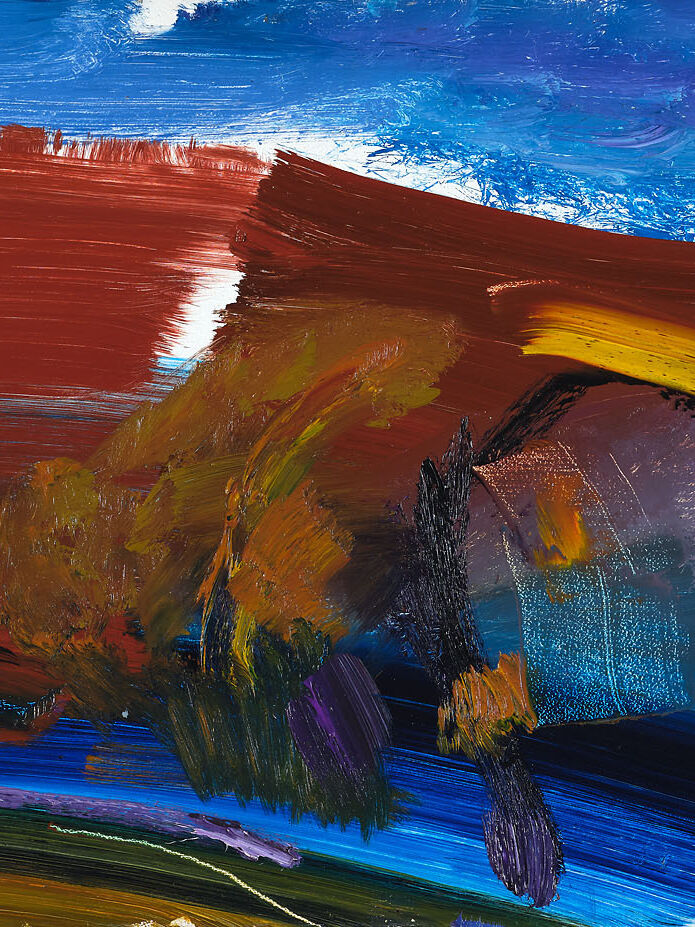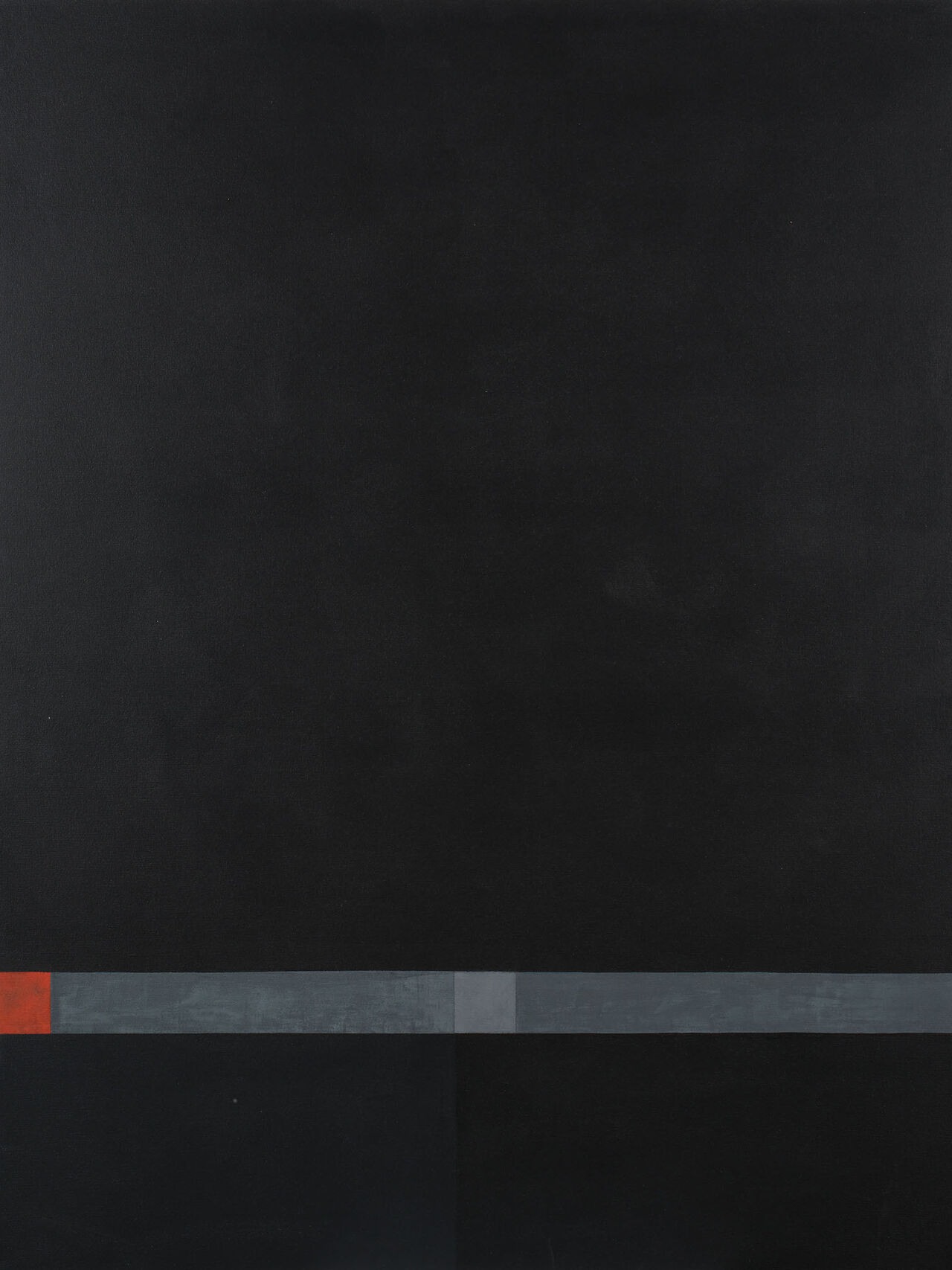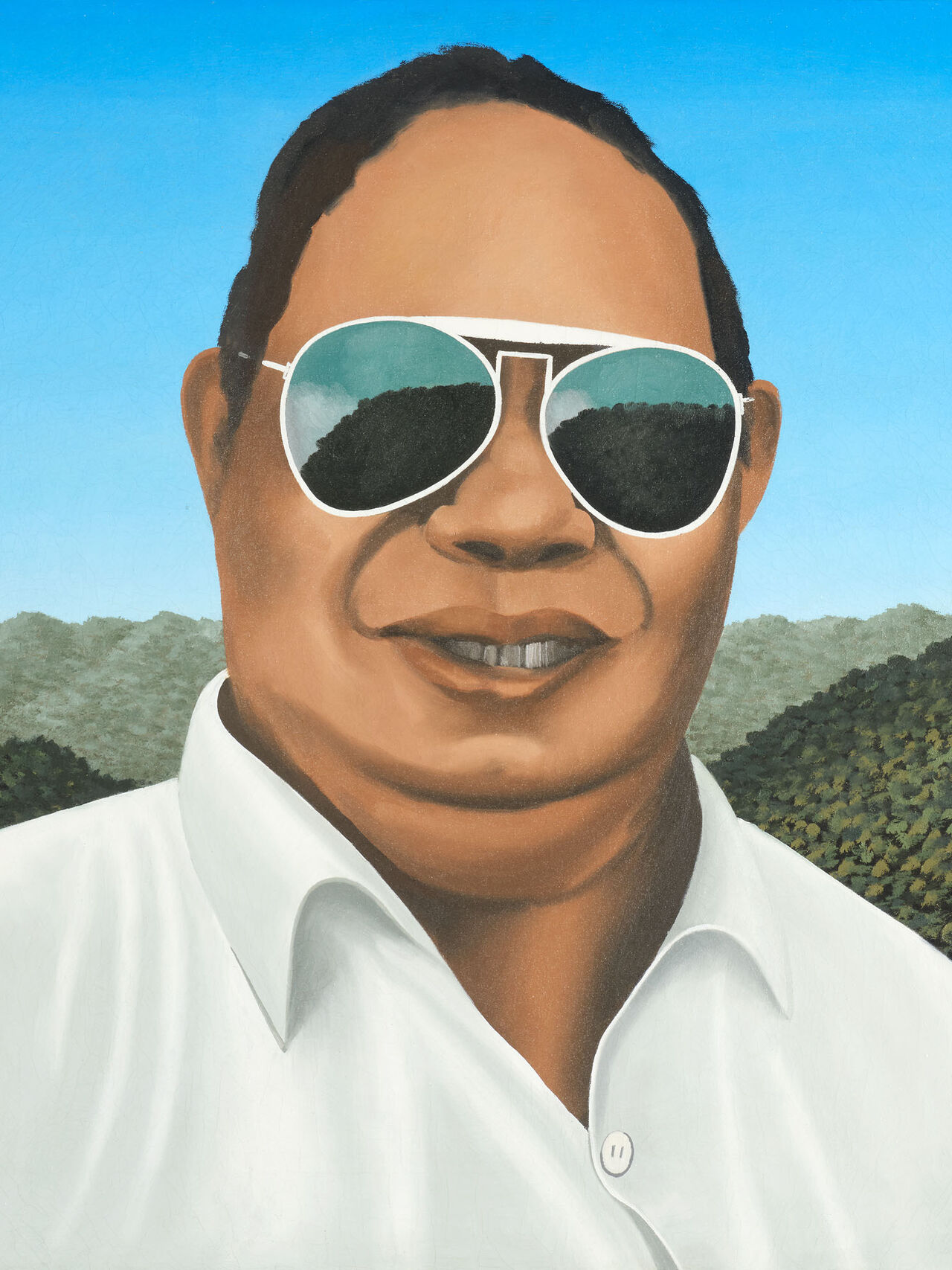Ralph Hotere 'I can hear you making small holes in the silence'
Laurence Simmons
Essays
Posted on 5 August 2025
We have had a lot of heavy rain recently and as I wrote this I listened to its muffled drumbeat on my roof. The impulse for making this painting comes from a poem by Hone Tuwhare, the artist’s friend, and the emotion that those words, a line of the poem (‘I can hear you making small holes in the silence’), can carry. Hōtere had first met Tuwhare, then a boiler-maker and prospective poet, in the 1950s while drinking with literary figures Allen Curnow and Bill Pearson in the Central Hotel in Auckland.

He also designed the cover for Tuwhare’s 1970 collection Come Rain Hail where the poem of the painting first appeared: a striking purple cover page with a perfect orange circle. Then in 1972 he provided a suite of watercolour and ink works based on the formal device of repeated vertical lines for Tuwhare’s third collection Sap-wood & Milk. The words of the poem never left Hōtere and this later 1979 painting, I can hear you making small holes in the silence, was produced at the same time as three large Rain banners commissioned by the architects of the Hocken Building at the University of Otago to hang in the main entrance of the Hocken Library. The full handwritten poem runs across the base of those three loosely hanging canvases. But here in I can hear you making small holes in the silence the abbreviated text is a mix of stencilled capital letters and cursive handwriting.
Neither abstract nor figurative I can hear you making small holes in the silence is a work of parts — it is relational and it uses surprising harmonies of shape, texture and colour with aplomb. Form is always there but it is often the unstated antagonist of Hōtere’s works. In I can hear you making small holes in the silence it is there the folded corner at top left; the hyperactive impastoes of the central panel; the side zones into which the dots of the centre seem to fray; the wide base at the bottom with its glowering light. These forms raise the spectre of certainty, but then the final painting becomes a taxonomy of distraction. Swift strokes, falling drips, jostle forwards in a single, albeit rumpled, optical plain. Hōtere’s image is more present and powerful because, like the rain it nominates, it is a form of action. Its precise textures were not planned, nor were they meticulously put in place. They happened, or were made to happen; stippled and speckled marks made by a brush laden with paint, let drip, chancy, provisional and suggestive. Simply and mysteriously they work on the viewer’s nervous system. The painting in its tones and textures has a sense of risk and daring. It is about energy, the energy of the rain beating on our rooves; the energy Hōtere unleashes when he paints; and the energy he provokes in those of us who come to look at his painting.

Textures stumble over each other, swooping curves agree with short brushstrokes. The painting is a cacophony of accumulated drips, scratchy leisurely lines, smears pressed into the grain of the canvas with a flattened brush, a bouquet of drips superimposed upon each other refusing to be decoded. The jostle of mismatched marks and textures enable an exhilarating sense of participation, as if we are viewing stroke by stroke. There are the apparently incongruous, smeared lines either side of the central panel. Against the sheer drama of the central panel’s scattered paint, these marks might seem like afterthoughts, smudges, but the more you look at them the more they pull your eye into the centre, the more enigma and emotion they seem to contain. They offer us an image of frailty against the strength and rush of the central falling. The sensibility is contrapuntal, disparate forms joined together to create an imagistic gestalt. Hōtere conducts us into a specific part of his world and tactfully leaves us alone there.
Tuwhare later wrote a poem to his friend with the title ‘Hotere’ about being rendered speechless in front of the artist’s painting. When words fail all he can do is:
I shake my head and say: hell, what
is this thing called aroha
Hōtere was notorious for not talking about, let alone explaining, his work. But perhaps this was because there is something reserved about it, something so delicate and instinctive, but also direct and simple and intense, that talking about it will not help anyone see the paintings any better. My essay may be doomed in that sense and now the rain has stopped.


